The hybrid 9mm Taurus G3X pistol features a compact 3.2-inch barrel/slide assembly mated to a full-size polymer grip frame, and it comes with two flush-fitting 15-round magazines

The new-for-2022 9mm G3X from Taurus is a hybrid version that customers specifically asked for. As Taurus describes it, the G3X is a “blend” of the compact G3C and the full-size G3. I just say it’s a clever combination.
Up top, the G3X features a stainless-steel 3.2-inch-long barrel and a compact stainless-steel slide. The slide is finished in matte black Tennifer, and it has three grasping grooves on each side at the front and eight grasping grooves on each side at the back. The top is flat, and the top edges are rounded. The muzzle end and the sides ahead of the ejection port are contoured for easier holstering. The barrel has a loaded-chamber view port on top of the chamber that allows a chambered round to be seen, providing visible verification.

The all-black rear sight is dovetailed into the slide, so it is drift-adjustable for windage, and the dovetail is sized to fit popular aftermarket tritium rear night sights, allowing users easy replacement of the all-black rear sight if they so desire. Personally, I like the all-black rear sight. In fact, I prefer it. It has a square notch that is 0.167 inch wide, and the face has fine horizontal striations. The steel fixed front sight is 0.152 inch thick and 0.152 inch tall. It has a plain white dot. The sight radius is 5.19 inches.
While the G3X is not optic-ready, it is compatible with the G3 and G3C T.O.R.O slide kits available from Taurus. T.O.R.O. stands for Taurus Optic Ready Option, meaning T.O.R.O. slides are cut for mounting plates, and the slides come with multiple plates that accommodate most popular red-dot reflex-type sight footprints.
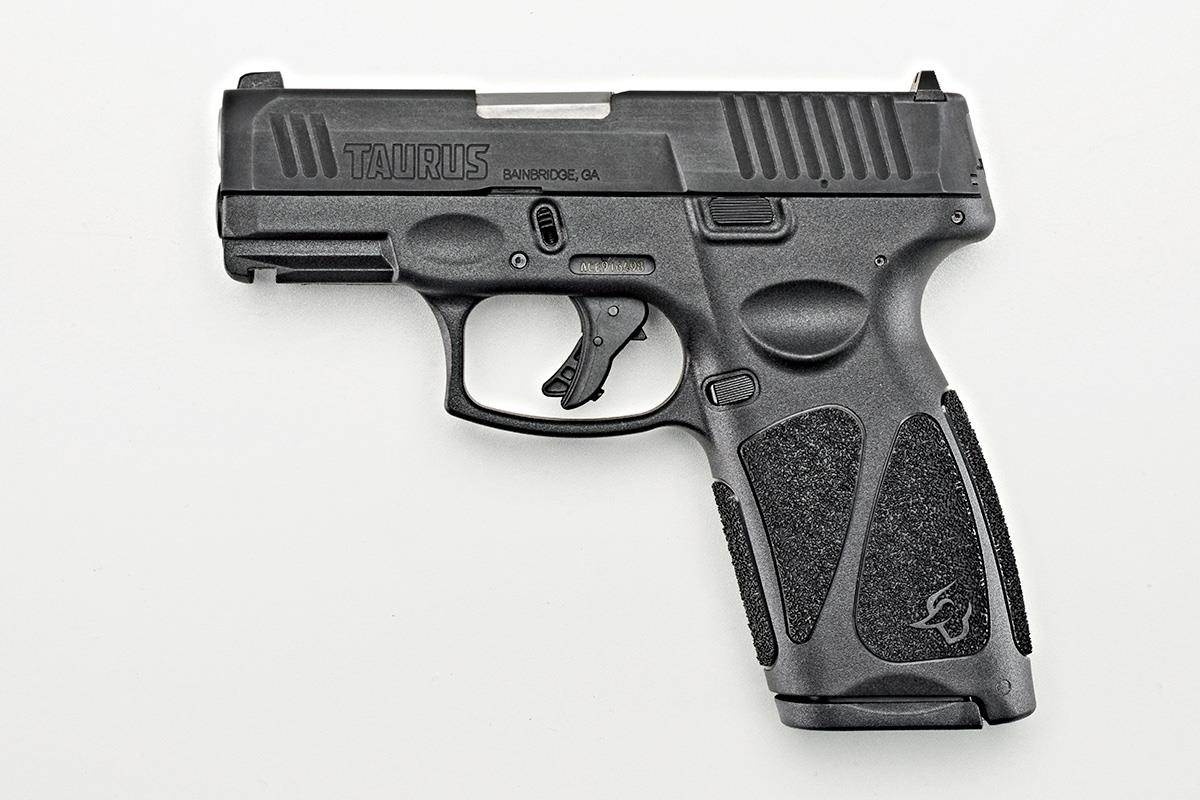
The G3X’s polymer frame has recesses on both sides above the trigger guard that are designed specifically for the shooter to use to rest the trigger finger when not actively shooting, keeping the trigger finger entirely outside the trigger guard and off the trigger. The company calls them “Taurus Memory Pads,” and the term has been trademarked. At the dustcover end of the frame is an integral accessory rail with a single cross-slot.
The grip area has molded-in thumbrests (Taurus calls them thumb “shelves”), and it has six panels of fine stippling-like texturing: one on the frontstrap, one on the backstrap, and two on each side. It provided a secure gripping surface during my shooting sessions. The grip’s circumference measures 5.63 inches.
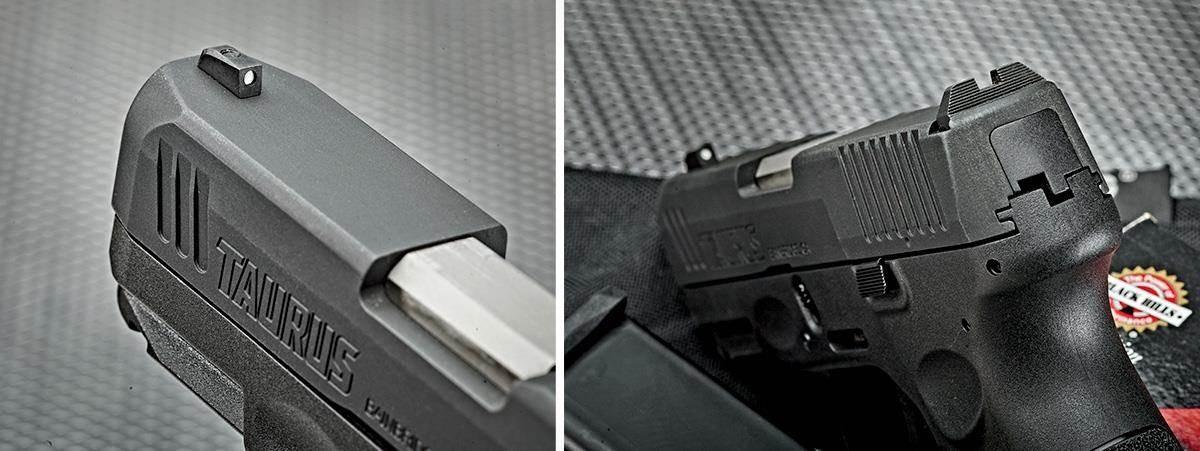
Like a lot of striker-fired pistols, the G3X has a hinged trigger safety, and it prevents the trigger from being squeezed unless the shooter’s finger has fully engaged and depressed the trigger safety. Like Taurus’s earlier G3 pistol, the G3X’s trigger safety is noticeably wider than other such trigger safeties.
Unlike a lot of other striker-fired guns, the G3X’s trigger pull is pretty good—not sloppy or mushy. My sample’s trigger broke at 6 pounds, 8 ounces on average for five measurements with my RCBS trigger pull scale. Take-up was fairly long but not unexpectedly so, the break was crisp, and the reset was audible.
The G3X has an internal striker block safety. It keeps the striker from moving forward unintentionally—as in a drop or a hard impact—and accidentally striking the primer. When the trigger is squeezed rearward, the striker block is pushed away from the striker.
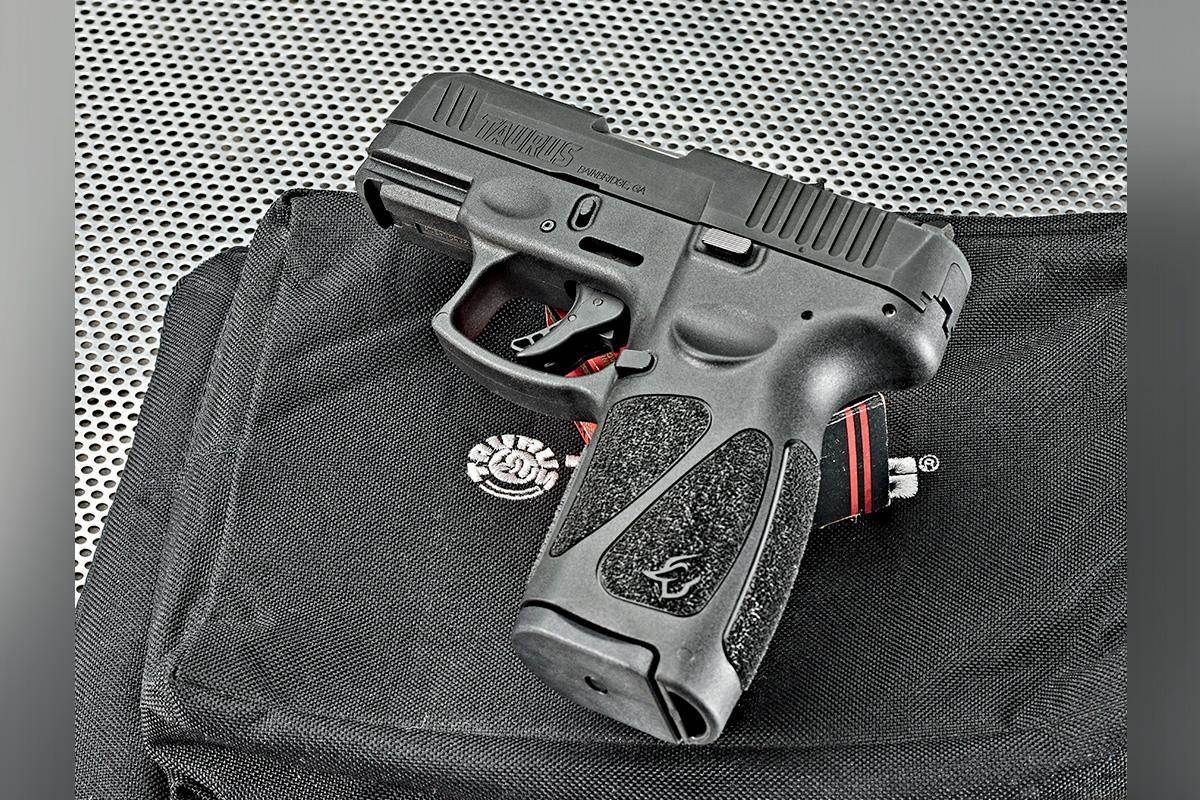
Also unlike other striker-fired pistols, the G3X has repeat-strike capability. That means if a round fails to go off the first time, after reset, the trigger can be squeezed again quickly. As anyone who has done a fair amount of shooting knows, sometimes with a repeat strike, the round goes off. It’s a great capability for a self-defense gun.
Another great capability for a self-defense pistol is the ability to fire with the magazine removed. The G3X has that ability.
My G3X came with two flush-fitting 15-round magazines. The pistol is also offered with two 10-round magazines for locations that limit magazine capacity. The magazine bodies are metal, and the polymer baseplates are removable. G3 17-round magazines will function in the G3X.
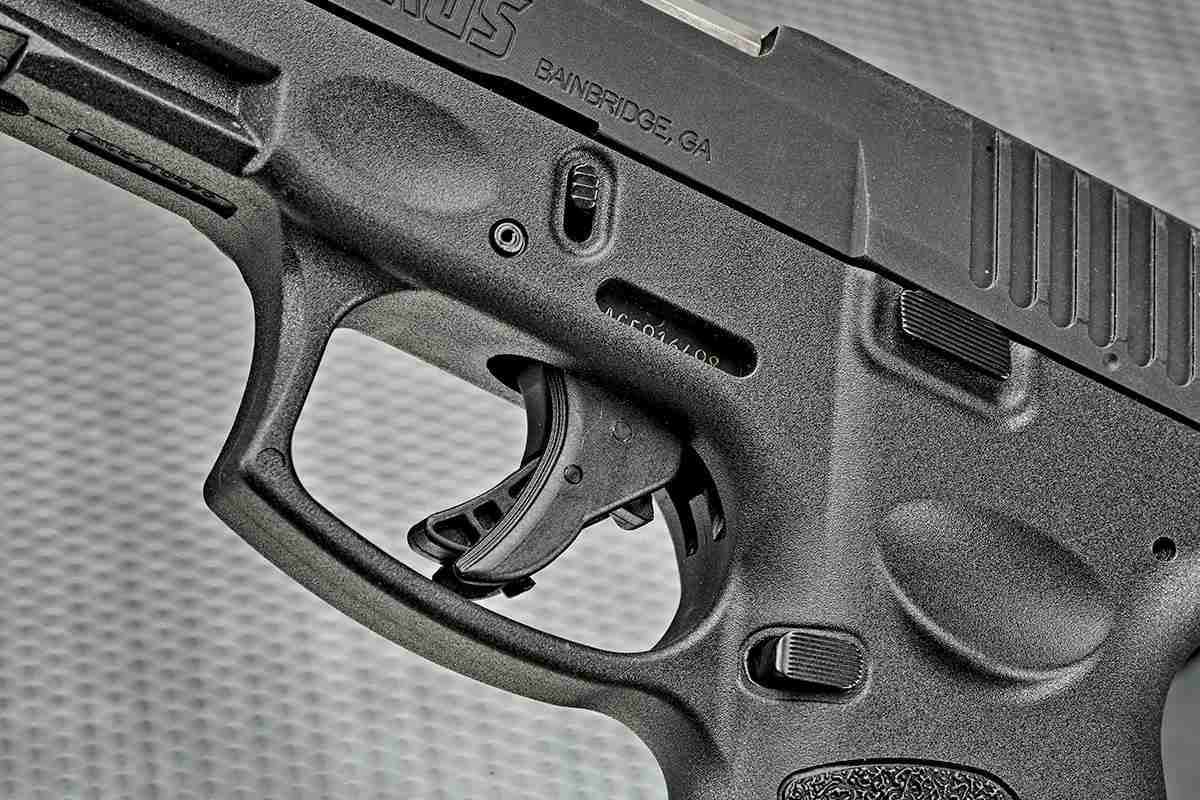
The G3X is 6.3 inches long overall, 5.2 inches high, and 1.2 inches wide. The slide proper is 0.99 inch thick. The pistol weighs 22.6 ounces with an empty magazine inserted.
The G3X field strips easily for regular cleaning and periodic maintenance. Simply remove the magazine, be certain the pistol is not loaded by racking the slide and checking the chamber, return the slide to its forward position, point the pistol in a safe direction, retract the slide slightly, pull down the takedown lever, and move the slide forward off the frame. Remove the recoil spring assembly from the slide and then remove the barrel.
In addition, the G3X’s slide is easy to rack. Some striker-fired mechanisms require very stiff springs, and this makes their slides hard to rack. Not so with the G3X. Using my jury-rigged apparatus, consisting of my trigger pull scale hooked to a cleaning rod, the G3X requires about 20 pounds of pull to rack the slide. Most striker-fired pistols I’ve encountered—and I’ve worked with quite a number of them—require upwards of 22 pounds. Maybe that doesn’t sound like much of a difference, but you definitely can feel it.
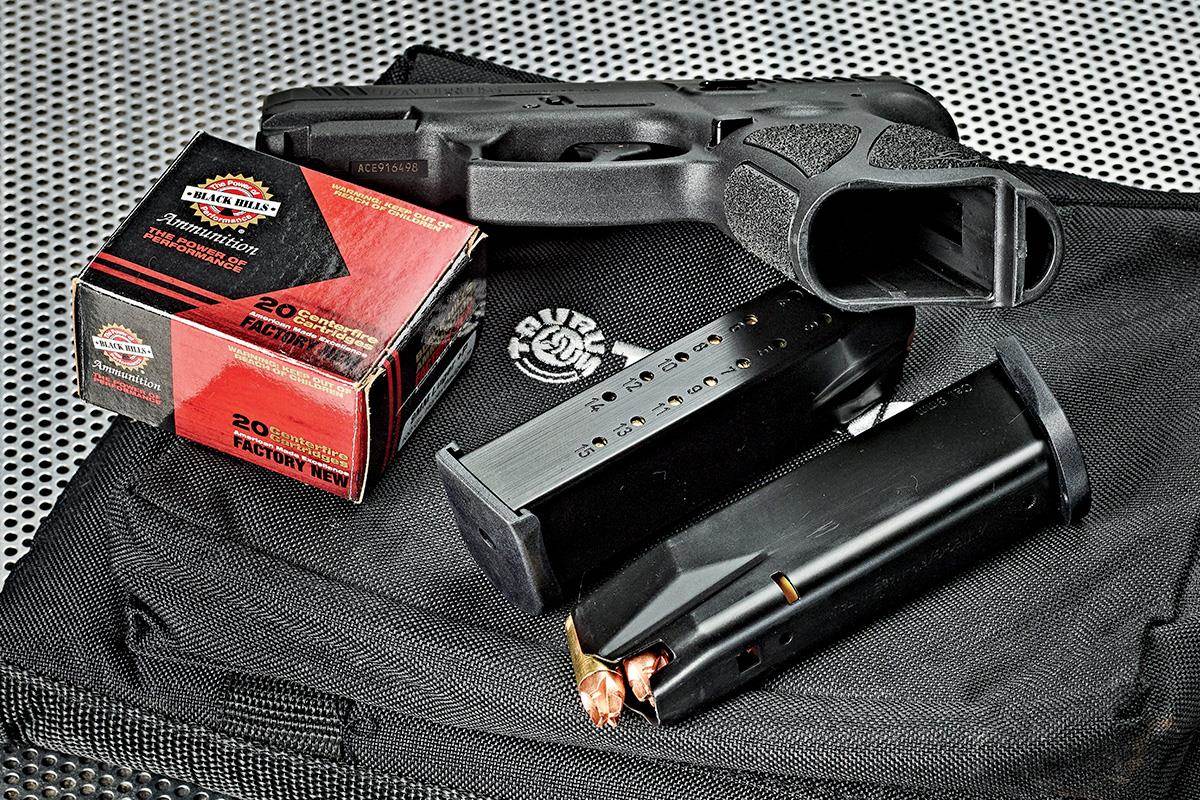
Fun & Games
As I write this report, spring is in the air where I live, so I pulled out all the stops and fired 20 9mm factory loads in the new G3X. I spent a very pleasant day at my shooting range putting it through its paces, and as the chart shows, it is adequately accurate from the bench at a range of 25 yards. All loads averaged under 4.00 inches, and that’s for five, five-shot groups with each load. The overall average 25-yard accuracy for all 20 factory loads was 3.34 inches.
But this gun is designed for concealed-carry personal protection, where any shooting that needs to be done is most likely going to be at much closer distances. With that in mind, I fired 15 rounds more (one full magazine) of each factory load on Birchwood Casey Dirty Bird BC-27 silhouette targets at a range of seven yards. The pistol put those rounds into nice tight groups every time. Recoil was easy to manage, and the white-dot front sight was easy to see against the dark blue targets.
In the end, the G3X is very easy to shoot well. The longer grip easily fits my medium-size hand and is totally comfortable.
With its 15-round magazine capacity, the new G3X offers a lot of firepower, and I think it should be on your short list of new-for-2022 self-defense pistols to check out.

G3X Specifications
- Manufacturer: Taurus, taurus.com
- Type: Striker-fired autoloader
- Caliber: 9mm Luger
- Magazine Capacity: 15 rounds
- Barrel: 3.2 in.
- Overall Length: 6.3 in.
- Width: 1.2 in.
- Height: 5.2 in.
- Weight, Empty: 22.6 oz.
- Finish: Black Tennifer
- Sights: All-black rear, white-dot front
- Trigger: 6.5-lb. pull (as tested)
- Safety: Trigger safety/firing pin block
- MSRP: $342.98
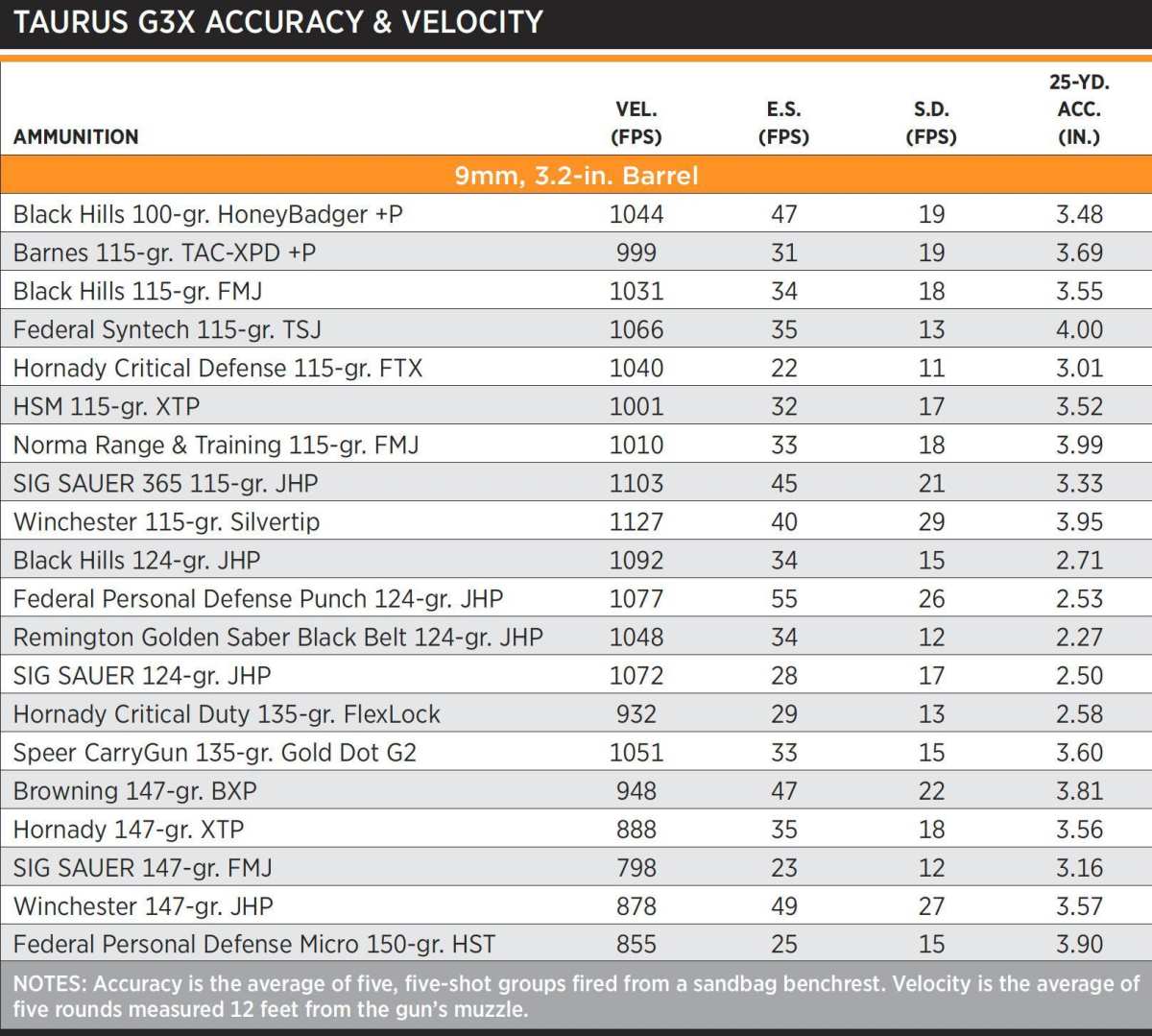
From the Brillant Kim du Toit
The REAL Big Loser?
Last week the Supreme Court dealt what seems to be a massive blow to the bureaucracy of the modern Administrative State — wherein an agency can become a de facto mini-state by creating and interpreting its own regulations, and then enforcing them without much in the way of legal oversight and defense.
The beacon in this ruling is SEC v. Jarkesy, which noted “…the Securities Exchange Commission’s power to serve as enforcer, prosecutor, judge, jury, and executioner in administrative proceedings for violating the securities laws. The Court found that the defendants are entitled to a jury trial before an Article III judge.”
Needless to say, the gun guys — especially these folks, from whom I excerpted and modified the previous paragraph — who have long suffered such iniquity at the hands of the loathsome Alcohol, Tobacco & Firearms (ATF) agency, are all over this.
However, lost in all this excitement is the agency which I think has the most to lose from Jarkesy (and the earlier Loper Bright v. Raimondo decision).
I refer here to the still-more loathsome Internal Revenue Service (IRS), who have always been able to bludgeon taxpayers in this manner. They have their own regulations, their own courts and, lest we forget, a veritable army of well-armed minions who are only too willing to enforce their agency’s regulatory diktat. I remember seeing on TV an excellent summary of the power of the IRS when a judge said, “So basically, in order to win your case against this man, all the IRS has to do is prove that they followed their own internal procedures properly?” to which the IRS lawyer said, “Yes, your Honor.”
Massive rafts of tax law have given birth to an entire world of tax lawyers and -accountants (both in private practice and in the IRS itself), which is in itself excessive and burdensome. (I am reminded of the way colonial Hong Kong collected income tax: once a year the taxpayer took to the tax office his employer’s statement of his gross salary paid, and he would write out a cheque for 5% of that total to the government. That’s it. Imagine the impact of that scenario in the United States today.)
Anyway, I’m not only not a lawyer, but I also don’t play one on TV and I sure as hell don’t play one on this blog. But I am generally cognizant of the bigger picture, and I’m just wondering if the greatest losers of the Lopez Bright and Jarkesy decisions will not be the horrible SEC, EPA and ATF, but the fouler-still IRS.
I am sure t

Everyone has his own definition of accuracy, but on one thing we all agree: Every rifle is a law unto itself. What shoots well in one rifle may or may not shoot well in another.
Although the average factory rifle today, paired with premium factory ammunition, is vastly more accurate than it was even 20 years ago, for the absolute, very best, gilt-edged accuracy in any rifle, you must develop an accurate handload.
Undoubtedly, manufacturers today have the essential elements of accurate rifles down pat, to the point where they can produce some outstanding factory products at a low price. Ruger and Savage are good examples. Even so, they won’t all shoot well with every load, and all of them can be improved with handloads. Granted, sometimes the factory/factory combination is so good that handloading for improvement is hardly worthwhile, but that’s a personal judgment.
A Case in Point
Having said all that, let me now share a tale of a rifle that proves the point. Last year, I lucked into a custom .270 Winchester built by the legendary Al Biesen on an FN Deluxe action, probably in the 1970s. It is beautifully inletted, with the action partly glass bedded. It has a tight chamber with almost no freebore. In fact, with the Nosler 130-grain Partition (one of my all-time favorite bullets), it has no freebore at all. Seated to the SAAMI maximum cartridge length of 3.34 inches, the bullet just brushes the rifling, and seated to that depth, the base of the bullet is exactly even with the base of the neck. These are all ballistic virtues that we know promote consistency and accuracy.
I got the formula for a load from Tom Turpin, a .270 Win. lover of long standing, that he says delivers fine accuracy with any good 130-grain bullet. The load is 59.5 grains of H4831, long known as one of the finest powders for the .270 Win. As an experiment, I put together some rounds loaded with the Partition, as well as some with the Swift Scirocco II and the Sierra GameKing Spitzer boattail. The latter two do not fit the chamber specs mentioned above quite as well as the Partition, but they’re close.
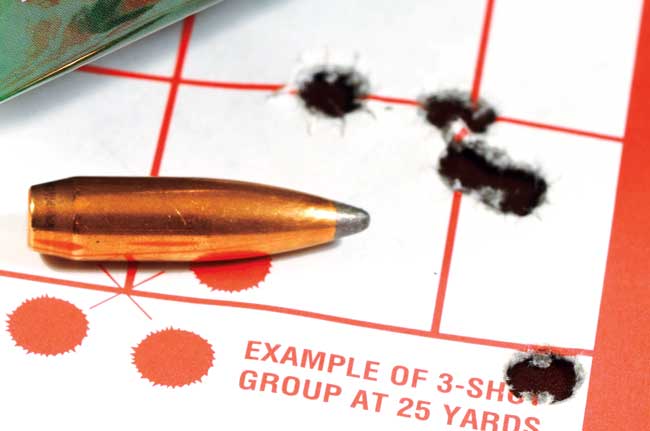
At the range, the Partition load was dreadful. Velocity wasn’t bad, at 3,020 fps, but its five-shot group was evenly spread out 3 full inches, side to side. The Scirocco II bullet won the velocity contest, at 3,060 fps, and also delivered the best accuracy overall with a 1.25-inch five-shot group. The Sierra bullet was the slowest at 2,998 fps but put four bullets into a tight cluster of 0.77 inch with one flyer expanding the group to 1.40 inches.
Let me hasten to say that I love Partition bullets, firmly believe they are among the most accurate bullets made, and have shot some of my all-time best groups with them, in several different calibers. From my chamber measurements, it looked to me as if Biesen fashioned this rifle specifically for the Partition, but apparently not. At least not at that velocity. I will try different powder charges and different powders before I give up on them. There is no reason that they shouldn’t shoot like a house afire.
Meanwhile, the other two are excellent hunting bullets, and a little variation up and down may tighten those groups even further.
Most shooters like a rifle with character, some history, and, to add spice, a little mystery. Lucile – for that is her name – has all three.
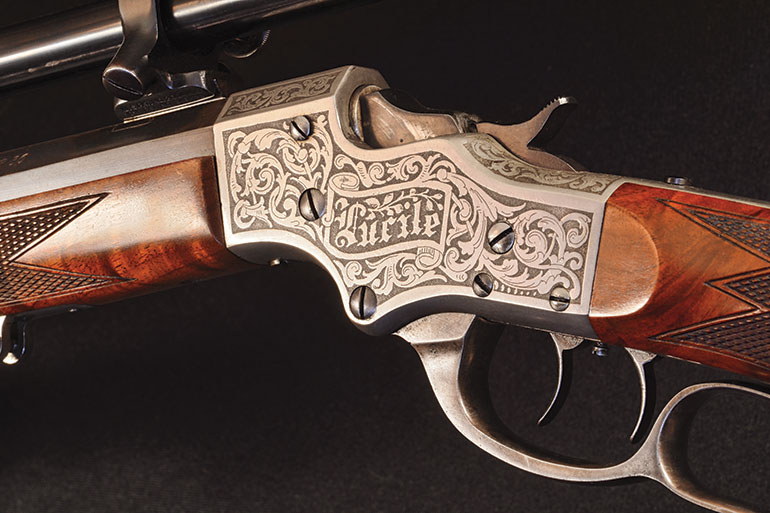 Who could Lucile be? She might be the rifle herself or one of the woodchucks depicted on the other side of the action or the first owner’s paramour. We will never know for sure, but Terry likes to speculate.
Who could Lucile be? She might be the rifle herself or one of the woodchucks depicted on the other side of the action or the first owner’s paramour. We will never know for sure, but Terry likes to speculate.
If she were a girl, you could say I met her at a dance, twirled her once around the floor, then watched her leave with another guy. Three months later, a sadder but wiser girl, we met up again, and this time she came home with me. Lucile being a rifle, that’s not quite what happened, but close enough. It was an auction, not a dance floor.
Here’s what I know about her history. She’s a Stevens Model 52, chambered in .28-30-120, made to special order around 1902. She has a No. 44 action, which was discontinued in the higher grades around 1903, but the .28-30 was only introduced in 1901, so that pinpoints it nicely. The Model 52 was one of the finest of the Stevens target rifles, equipped with lovely walnut, a palm rest, and all the frills of the best Schützens. Somewhere along the line, she was fitted with scope blocks and now sports an 8X Lyman Junior Targetspot.
Now the mystery. Who ordered her? And who was Lucile? The name is engraved in old English lettering, in a banner on the left side of the action, surrounded by scroll. And on the right side, there are two woodchucks under a tree. One is down nibbling clover, while the other is standing up and gazing intently, as all good woodchucks do.
Was Lucile the first owner’s wife, girlfriend, daughter, paramour? Or was the rifle owned by Lucile herself? Or is Lucile one of the woodchucks? (Personally, I rather like that idea.)
The embellishment very likely was begun by etching the steel to get the general outline, then sharpening it with engraving before finally nickel plating. Although the plating is beginning to fray here and there, overall it’s in remarkable condition. It may or may not have been delivered from the factory with iron target sights.
Impossible to tell now, but someone was a serious shooter because it is fitted with a palm rest and the scope, and it is chambered for the darling target round of that era, the .28-30-120 Stevens.
 The rifle is a Stevens Model 52 built on the No. 44 action, most likely in 1901 or ’02, and chambered for the .28-30-120 Stevens.
The rifle is a Stevens Model 52 built on the No. 44 action, most likely in 1901 or ’02, and chambered for the .28-30-120 Stevens.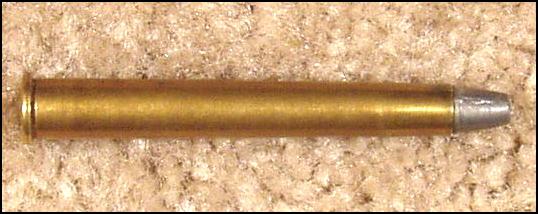
The scope is an 8X Lyman Junior Targetspot.
The Stevens records were all destroyed in a fire, shortly after World War I ended in 1918 and before the company was acquired by Savage. There is very little official written material about models and features, to say nothing of serial numbers and written orders for individual rifles. This is the polar opposite of Winchester and Colt, where it is now de rigueur for auctioneers to pitch the item as coming “with the factory letter” giving details of its origins and life on the frontier.
In a way, it seems to me, we almost have too much information about some guns. Sure, we all wish they could talk, to tell us where they’ve been and what they’ve done, but as with most things, we should be careful what we wish for. Do I really want to know who Lucile was or why the rifle was named that? Or is it more fun fantasizing about possible scenarios? In this case, I think it is the latter.
M&P FPC Folding Carbine Chapter 2
